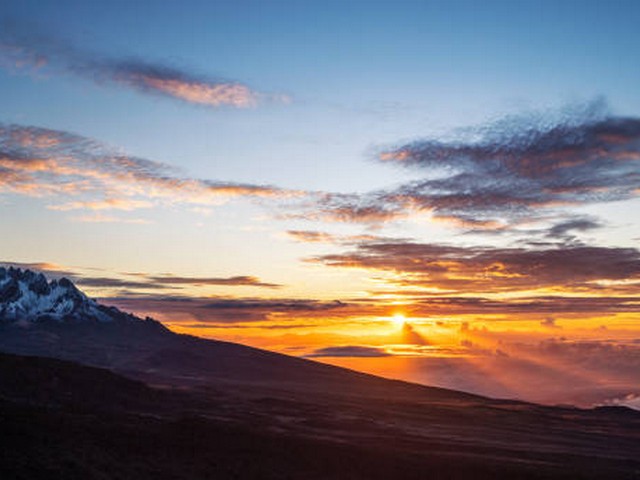Scaling New Heights: Kilimanjaro Trek Preparation Tips
At the Kilimanjaro Centre For Trekking and Ecotourism (KCTE), nestled at the foothills of Africa’s towering masterpiece, Mount Kilimanjaro, we understand that preparing for this epic climb is as monumental as the mountain itself. Climbing Kilimanjaro is not just about endurance and strength; it’s about embarking on a transformative journey that begins long before you set foot on the trail. In this detailed guide, we’ll take you through essential preparation tips to ensure you’re fully equipped for the adventure that awaits. Let’s dive into the heart of Mount Kilimanjaro, step by deliberate step.
Start With Understanding the Challenge
Know What You’re Up Against
Mount Kilimanjaro, Africa’s highest peak, stands at a majestic 5,895 meters (19,341 feet) above sea level. This dormant volcano beckons adventurers from around the globe with its three volcanic cones: Kibo, Mawenzi, and Shira. Climbing Kilimanjaro is a feat that requires physical fitness, determination, and the right mindset. Understanding the climatic conditions, altitude levels, and the physical demands of the trek is the first stride in your preparation journey.
Physical Preparation: Getting Fit for Kilimanjaro
Crafting a Fitness Regime
Physical readiness cannot be overstated when it comes to tackling Kilimanjaro. Begin your training at least six months prior to your expedition. Focus on cardiovascular fitness through running, swimming, or cycling. Strengthen your leg muscles with hiking, and don’t underestimate the power of long walks, especially with a weighted backpack. Simulate the trekking experience as closely as possible, and consider using stair climbing as a beneficial exercise.
Gear Up: Choosing the Right Equipment
Essential Gear for Your Trek
The right gear can make the difference between a successful climb and a challenging ordeal. Layered clothing that you can add or remove easily will help you adapt to the varying temperatures. A sturdy pair of broken-in hiking boots is crucial, as are thermal underlayers, a waterproof jacket, and a warm hat and gloves. Don’t forget a high-quality sleeping bag rated for low temperatures and a comfortable, durable backpack.
Navigating Nutrition and Hydration
Fueling Your Ascent
The right diet and adequate hydration are your best allies on Mount Kilimanjaro. High-energy, light, and nutritious meals are ideal. Consider complex carbohydrates for sustained energy, and don’t skimp on proteins and fats. Hydration is crucial, especially at altitude where the air is dryer and dehydration occurs more quickly. Aim to drink at least three to four liters of water daily during the climb to maintain optimum hydration levels and aid acclimatization.
Mental Preparation: The Psychological Trek
Cultivating a Mountaineer Mindset
Mental stamina is as critical as physical preparation. Familiarize yourself with the journey ahead through maps and trekking blogs. Visualize your daily trek and mentally prepare for the challenge. Stay positive and resilient, and remember why you’re undertaking this incredible journey. Mental fortitude will help you enjoy the trek and keep pushing forward when times get tough.
Acclimatization: Understanding and Adapting to Altitude
The Art of High-Altitude Climbing
Altitude sickness is a real concern on Kilimanjaro. To mitigate its effects, consider a climbing schedule that allows for gradual acclimatization. This might mean a longer route or incorporating rest days into your itinerary. Listen to your body and communicate openly with your guides about how you’re feeling. Slow and steady is the mantra for successful altitude adaptation.
Choosing the Right Path: Routes to the Summit
Selecting Your Kilimanjaro Route
Kilimanjaro offers several routes, each with its own unique challenges and scenic rewards. Whether you opt for the popular Marangu route with its hut accommodations or the scenic Machame route, which is steeper and more physically demanding, make your choice based on your fitness level, experience, and adventure spirit. At KCTE, we can help you choose the route that best suits your needs and ensures a memorable and successful climb.
Sustainable Trekking: Respecting Nature
Eco-Conscious Climbing
As you prepare to meet Kilimanjaro, remember that it’s not just an adventure; it’s an opportunity to connect with nature and contribute to its preservation. Practice Leave No Trace principles, respect wildlife regulations, and opt for eco-friendly products. At KCTE, sustainability is at the heart of what we do, and we encourage all our climbers to adopt these practices.
Join Us at KCTE for Your Kilimanjaro Adventure
Embracing the challenge of Kilimanjaro starts with being well-prepared. At the Kilimanjaro Centre For Trekking and Ecotourism (KCTE), we’re committed to ensuring that every adventurer who joins us is equipped not just with the tools for the climb but with the confidence to enjoy every step of the journey. Book your climb with us and let us guide you to the roof of Africa.
Frequently Asked Questions About Climbing Kilimanjaro
What is the best time of year to climb Kilimanjaro?
The best times to climb Kilimanjaro are during the dry seasons: January to mid-March and June to October.
How long does it take to climb Kilimanjaro?
The climb typically takes 5 to 9 days, depending on the route and speed of ascent.
What are the main risks of climbing Kilimanjaro?
The main risks include altitude sickness, dehydration, and hypothermia. Choosing a reputable tour operator like KCTE ensures you have experienced guides who prioritize your safety.
Do I need a guide to climb Kilimanjaro?
Yes, a guide is required by law. Plus, having a knowledgeable guide enhances your chances of a successful and safe summit.
Prepare to embark on a journey that transcends the physical climb. Conquer your fears, push your boundaries, and join us at KCTE to make your Kilimanjaro dream a reality. Together, let’s reach new heights.




